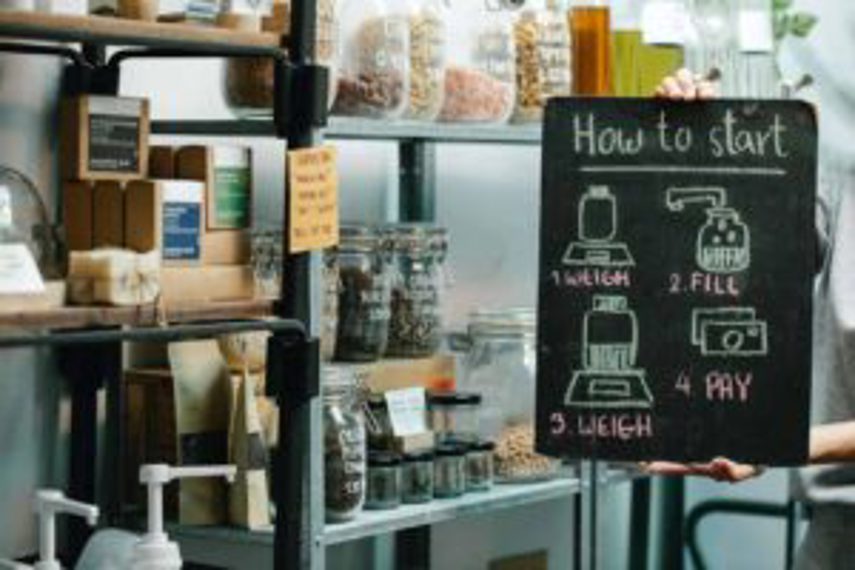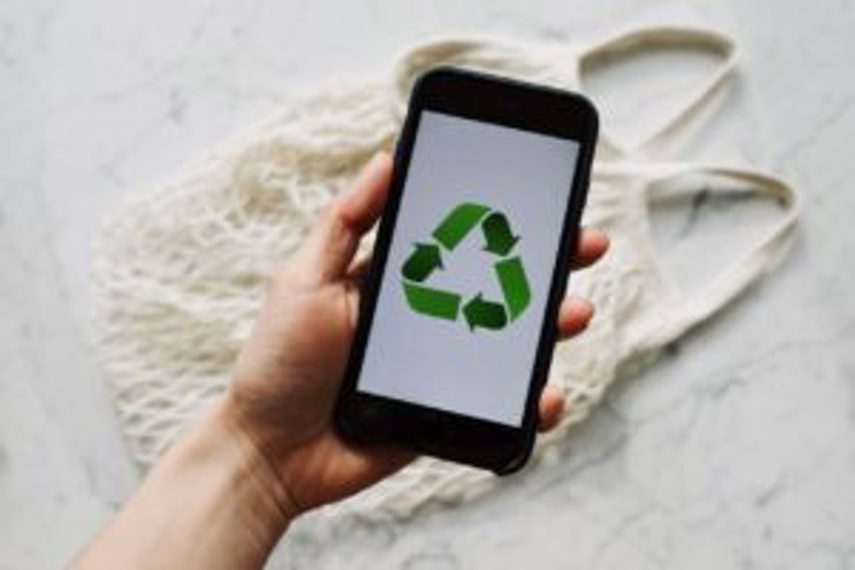
With material costs rising and the drive towards sustainable practices in full swing, the circular supply chain has become an attractive way for manufacturers and sellers to manage their supply chains in a more environmentally friendly way – and save costs in the long term.
So how do you close the loop on your supply chain? We take a look and offer strategies and case studies, along with tips from supply chain professionals.
What is a circular supply chain?
A circular supply chain is where used products or their parts are returned or processed so they can be repaired, resold, refurbished or recycled – which reduces waste from the supply chain and is more sustainable.
In other words, the circular supply chain focuses on optimising the lifecycle of a product: instead of materials ending up in landfill, they are returned to begin a new journey in the supply chain. Where this is not possible, other changes can be made to the product or process to reduce waste and the carbon footprint.
Also known as supply chain stewardship, the circular supply chain puts the onus back on those who manage supply chains to make procurement and manufacturing decisions that positively influence sustainable outcomes.

What is a closed loop supply chain?
A closed loop supply chain is essentially the same as a circular supply chain. Both of these aim to minimise resource usage and reduce waste from the supply chain by repurposing or recycling materials or products.
Circular vs linear supply chain
The linear supply chain is the traditional method of sourcing raw materials to make a product and sell it to consumers, with its lifecycle ending when it is no longer functioning or fit for purpose anymore – and it becomes waste.
The value in this method comes from using mass production to produce goods cheaply – meaning the business can sell as many items as possible.
The circular supply chain, on the other hand, is able to create value through keeping a product or part in use many times over – so it’s a method of ‘make, use, recover, reuse, reclaim’.
Why is a circular supply chain important?
A circular supply chain is important for many reasons, but primarily because:
- It saves businesses costs in the long run – especially as materials become scarce and/or expensive
- It focuses on preventing as much waste as possible from going to landfill
For manufacturers and sellers, the circular supply chain is a key part of a broader move towards reducing waste and using more environmentally friendly practices. As such, businesses that have implemented circular supply chains often couple circular supply with other sustainable practices, such as reducing energy consumption or using greener energy sources, and finding alternatives to single-use plastics.
 The circular supply chain takes used products and their materials and reintroduces these into the supply chain – a process that can often take place repeatedly
The circular supply chain takes used products and their materials and reintroduces these into the supply chain – a process that can often take place repeatedly
How do circular supply chains benefit business?
For businesses, adopting a circular supply chain is not only more environmentally friendly, but often more economical in the long run as well.
Not only that, but customers are increasingly demanding more sustainable and ethical practices – something that looks like it’s here to stay. As Sam Gilks, Senior Supply Chain Manager at Young Foodies, puts it: “Sustainability is definitely not a trend – it’s the thing. And everyone should definitely be very much focused on it.”
Here we take a deeper dive into the way the circular supply chain can benefit your business’ bottom line, with 5 key ways this method can benefit your business:
1. The circular supply chain maximises manufacturing investment
When employee resources, energy and material have already been used to produce an item, it makes sense to recoup these assets time and again where possible.
2. Lower cost production from circular supply means greater profit
Following on from the above point, reusing and refurbishing from recycled materials often results in a lower cost point for manufacturing.

3. Circular supply means less reliance on volatile raw material supply
According to DHL, there would be 75 million tonnes of additional recycling materials if all countries achieved top recycling rates. Making use of the materials already in the supply chain makes procurement easier, and means less reliance on supply chains that can be unreliable.
In the current period of supply chain uncertainty circular supply has practical benefits. Gartner's survey of Chief Supply Chain Offices (CSCOs) in 2021 found that inflation and supply shortages will lead to further production challenges over the coming years, with the underlying trend that ‘demand for goods is rising, while supply is increasingly scarce’.
4. You can meet regulation and certification standards with a circular supply chain
Many countries either have sustainable practices in place or are in the process of developing them to stricter standards. And there are also plenty of governments incentivising those who meet certifications.
Another takeaway from the Gartner survey (above) was that CSCOs are facing increasing pressure from both internal and external stakeholders to make their networks more sustainable. 67% of respondents said they were investing in the inclusion of environmental and social sustainability metrics as KPIs for their supply chain leaders.
5. Circular supply chains appeal to environmentally-conscious consumers
Businesses who adopt sustainable practices are also able to meet the needs of growing demand from eco-conscious consumers. With one third of consumers willing to pay a premium for sustainable products, companies should prepare for sustainability to become the expectation and not the exception in the future.
 A simple example of the circular supply chain in action is using refillable containers for products, rather than single-use packaging
A simple example of the circular supply chain in action is using refillable containers for products, rather than single-use packaging
6. Circular supply chain certifications and standards
There are several organisations offering certifications for circular supply chains – some focused on supply chain alone, while others include this as part of a broader certification that includes economic and/or social standards.
By gaining these accreditations, companies not only ensure their internal processes are adapting to a circular supply chain, but they can effectively show evidence of their commitment to external stakeholders – a circular ‘seal of approval’.
Some examples are:
- The Circular Economy Institute has a Certified Methodology programme, which once completed, identifies those businesses that are meeting the highest standards of commitment to implementing the circular economy.
- The Association for Supply Chain Management (ASCM) offers the Enterprise Certification for Sustainability, which covers a series of standards for ethical and sustainability practices, as well as economic responsibility. Companies can be certified to demonstrate that their supply chain processes are transparent and meet these standards.
- B Corporation offers B Corp Certification that demonstrates businesses are meeting high standards and transparency for a range of social and environmental factors, including supply chains. Companies that hold this certificate have information about their performance listed publicly.
- Businesses can apply for ISCC Plus certification with International Sustainability & Carbon Certification, which involves a full audit with a recognised ISCC body to establish that environmental and social standards are being met. The number of ICC-Plus certificate holders has risen quickly in recent years.
Ben Vear, General Manager (EMA) for Minor Figures, says getting B Corp certified is something the business is proud of – but the process was a challenge, partly because this certification is now so popular:
“B Corp – that’s something we’re really proud of. We’ve been carbon neutral for a couple of years, and this builds on that. It’s been challenging to get the B-corp over the line because they’re so busy, which is great news for everyone. It’s great to hear that community’s expanding.”

Many other certification programmes include supply chain practices as part of their criteria, some of which are country- or industry-specific. There is also a range of educational courses now available that cover sustainable supply chains – an example is The University of Cambridge’s Sustainable Supply Chain Management online short course.
Many of these certification programmes adhere to the United Nations’ Sustainable Development Goals (SDGs), a series of 17 goals set up in 2015 to provide a blueprint for future prosperity. The goals include ‘affordable and clean energy’, ‘responsible consumption and production’ and ‘climate action’.
 Several organisations now offer circular supply chain certification, some of which cover sustainability and ethical practices more broadly
Several organisations now offer circular supply chain certification, some of which cover sustainability and ethical practices more broadly
13 circular supply chain strategies
For businesses looking to integrate circular strategies to their supply chain, there are many ways to do so – from basic measures to more comprehensive and complex programmes.
Usually the foundation of a circular supply chain lies in reverse logistics – where a manufacturer or retailer has measures in place for items to be returned when they are no longer needed, so they can be reused, refurbished or recycled.
Here we take a look at techniques to manage and encourage reverse logistics, along with other ways to achieve a circular supply.
1. Serial track your packaging and pallets for return and reuse
Being able to track back your packaging and pallets so they can be returned and reused is a responsible sustainable practice. The circular supply chain aims for zero waste, which means keeping all elements of your supply chain out of landfill.
2. Relook at your packaging – especially through any D2C channels
With packaging contributing to 30% of eCommerce emissions, looking at how your products are packaged – especially those direct to consumers – is important.
Recycling, reusing and recovery solutions need to be simple and straightforward for the end user, otherwise there is the risk of them not taking the appropriate steps to sustainably dispose of the packaging.
Minor Figures, a UK-based business that produces oat milk, for instance, has set up around 150 stations in outlets around the UK, where customers can go and refill their containers.
Ben Vear from Minor Figures comments: “We’ve created refill stations that are in about 150 package-free stores across the UK, where people can go and refill a container. The packaging that the refills come in are sent to an Enval site, which is then turned back into green energy.”
Daniel Bull-Clearie, Head of Supply Chain at Mara Seaweed, says the company is re-thinking its packaging as well, looking into paper or seaweed polymer to replace the plastic pouches some of its products come in.

3. Make circular supply chain and waste minimisation part of your supplier approval process
Ensuring external suppliers are adopting circular supply chain practices, and minimising waste, is key to helping your own supply chain become more sustainable. This can be one of the criteria on all agreements and approvals.
David Press, Head of Operations at Three Spirit, says they look at the entire supply chain to appraise how sustainable it is – and that this can be beneficial in terms of costs as well:
“We look at the supply chain as a whole. Within our manufacturing companies we’re working with people who invest in renewable energies, and they’ll have cost reductions that they can pass on to us. So there’s a commercial angle to it as well as the sustainable angle.”
4. Make circular supply chain part of your product procurement
Following the same process for supplier agreements, you can also look to product procurement for ways to enhance your circular supply chain.
5. Use data to track and report on waste
Big data captures information for businesses and organisations to allow for better decision-making when it comes to logistics, manufacturing and order fulfilment – so using data as a basis for implementing a circular supply chain is essential.
You can not only apply learnings from data to develop a more efficient, faster and aligned logistics processes, but also research what new products can be created from renewable and recyclable materials.
6. Aim to shorten your supply chain
The longer the supply chain, the more emissions that are produced. So by shortening your supply chain so it includes local suppliers where possible, you'll reduce your ecological footprint.
Mara Seaweed, for instance, is moving its factory closer to the source of its raw materials. Daniel Bull-Clearie says they’re also looking into other ways to cut down on supply chain waste in future:
“I’m moving our factory from Edinburgh back into Fife closer to the source of where we get our wild harvest seaweed, so we’re reducing road miles. We’re looking at getting some electric vans this year.”

7. Adopt ‘product as a service’ models
While a company can incentivise the recycling and returning of products from consumers, it doesn’t mean it will always occur – making reclaiming and reusing difficult. So some companies are modifying their product to offer it as a service.
For example, US company Signify, which produces lightbulbs, agreed with the city of Washington, DC, to install 13,000 LED lights at no upfront cost to the city. Signify then receives its payment through the estimated $2million the city will save on energy costs, and they are then able to replace and recycle the bulbs at the end of their lifecycle.
8. Incentivise customers to recycle
Both clothing retailer H&M and mobile phone retailer Vodafone are incentivising customers to return used items to their stores, providing them with a discount or trade-in value for doing so. By the year 2030, H&M plans to use 100% recycled materials for its clothing.
By encouraging the practice of in-store recycling, organisations can minimise items going to landfill and benefit from being able to renew and recycle products.
9. Invest in educating internal and external stakeholders
To successfully implement a circular supply chain, it’s important to have participation from across the board – including training and managing employees so that they are aware, involved and interested in sustainability. This includes working with external stakeholders to collaborate on goals.
10. Implement green HR practices
Studies have shown that green HR management can positively influence a business' sustainability performance. This includes hiring the right people with the right skills and competences in sustainability, or upskilling existing staff.
11. Treat waste as an asset
Instead of seeing waste as a material at the end of its life, chief supply officers should see it as a resource with potential value. The key to capitalising on this is building ecosystem partnerships with waste contractors, suppliers and innovators.
12. R&D for circularity
From new materials to how a product can have a circular lifecycle, there are many ways in which research and development can focus on innovation in the manufacturing process.
Daniel Bull-Cleaver from Mara Seaweed, for example, says the company is currently using mains gas to dry its seaweed – but they’re looking at how they can use energy as efficiently as possible to reduce their carbon footprint, and have an eye on using greener alternatives in future.
13. Right to repair and refurbish
If applicable to your business, you could look to incentivise the repair of damaged or malfunctioning goods – instead of replacing for new. This strategy could also include refurbishing items for resale.
 To encourage buy-in from customers, incentivise reuse and recycling with methods like offering discounts, or offering repair or refurbishment rather than replacement
To encourage buy-in from customers, incentivise reuse and recycling with methods like offering discounts, or offering repair or refurbishment rather than replacement
Circular supply chain case studies
Keen to see how the circular supply chain is already working in the real world? Here are examples of organisations that have adopted sustainable practices in their day-to-day operations.
Kua Coffee’s circular supply chain
Kua Coffee is an Australian-based coffee supplier built on complete circularity:
Their coffee is sustainably sourced from Uganda, their packaging is recyclable, and all coffee grounds are repurposed into local community gardens and reuse projects. So nothing goes to landfill.
100% of Kua's profits go back to mobilising their farmers on a journey to climate resilience, including new native trees, soil-conserving waterways and a sustainable income. Kua Coffee is also carbon positive: they measure and aim to reduce their footprint every year, as well as offset the remainder at 200%.
Renault: ahead of its time with circular supply
Renault – the French car manufacturer – was well ahead of its time in 1949 when they began offering used vehicle parts at discounts between 30% to 50%, but with the same warranties and guarantees as new parts.
Its primary focus was to drive profits for the organisation, at a time when raw materials were lacking in supply, but it is a practice that continues today, with the company designing its major vehicle components to be easy to disassemble for even more profitability. Renault is now also on track to becoming carbon neutral.
Nike’s circular supply chain style
When they're no longer worthy of wearing, Nike wants you to return its shoes. It’s a part of their Move to Zero journey towards zero carbon and zero waste, where they recycle athletic shoes at the end of their life, and produce new shoes from the materials.
Ethique’s complete circular supply chain
Ethique had its humble beginnings in New Zealand and is now a global beauty and cosmetic brand. Built on a foundation of complete sustainability, Ethique has been B Corp certified since 2015.
Ethique’s products are 100% plastic free, one tree is planted for every online order, their office is powered by 100% renewable energy, shipping is plastic-free, and more than 18 million litres of water has been saved in the production process. In addition, the water that is used is recycled and recirculated.
The company has also been climate positive since March 2021, offsetting their carbon emissions by 120%.
Patagonia’s repair-based circular supply chain
In 2020, outdoor clothing and gear label Patagonia repaired over 100,000 of their used garments to sell through its Worn Wear initiative, and more than 520 tonnes of plastic destined for the ocean have been turned into gear by the environmentally-conscious company. Their next goal is to achieve 100% use of renewable and recycled raw materials.
